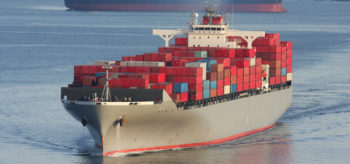
Ocean carriers have this year shown themselves to be “well-skilled” in the art of capacity management, according to a Drewry report.
It attributes their success in lifting rates to their ability to juggle supply-demand peaks and troughs.
Drewry’s Global Freight Rate Index was 37% higher in the first five months of this year than in the same period of 2016, despite container shipping’s well-known oversupply fundamentals.
The research consultant has identified what it terms the carriers’ “five-part trick”, which they have deployed to combat the impact of too much tonnage across global container trades.
Aggressive scrapping of older, less economic vessels, along with the mothballing of other ships which become temporarily surplus to requirements, are two important pillars of the carrier strategy, along with the deferring of newbuild deliveries for as long as possible.
But it is the final two parts of the carrier strategy that Drewry suggests are the toughest to implement successfully: cascading ships into smaller trades and blanking sailings based on the anticipated tradelane slot requirements.
However, according to the recent Drewry analysis of headhaul ship utilisation, carriers have focused their attention on boosting east-west trade utilization at the expense of north-south routes.
In its quarterly Container Forecaster report, Drewry load factors recorded for east-west headhaul voyages were the “best ever” said Drewry. But, in contrast, the north-south reading for Q1 was the “worst of its kind on record”.
Drilling down, Drewry said that on all but one east-west route, the Mediterranean to the US, demand growth outstripped supply in the first quarter of the year.
The supply and demand balance on east-west routes was further tilted by stronger than expected volume growth, which was an added bonus for the container lines.
Drewry’s research said it had logged 141 canceled east-west voyages in the first five months of this year, which is significantly down on the 259 void sailings in the same period of 2016, and in both years the greater number of blanked sailings were on the Asia to US west coast route.
Drewry lauds the carriers for their expertise in anticipating the monthly supply needs of a tradelane, which it says is “an extremely complex task” and made more difficult by the “lumpy nature of volumes”.
Nevertheless, Drewry cautions, the capacity “juggling act” will get tougher with the millions of teu of newbuild capacity due to hit the water over the next few years. Indeed, according to Alphaliner data, there are 51 ultra-large container vessels of 18,000-21,000 teu due to be delivered within the next two years.
So, carriers will need to keep on top of their capacity control game, at least until the new ships work their way through the system and the consequence of the virtually empty orderbook begins to rebalance the supply-demand equation without the need for radical intervention.
Copyright Ships & Ports Ltd. Permission to use quotations from this article is granted subject to appropriate credit given to www.shipsandports.com.ng as the source.